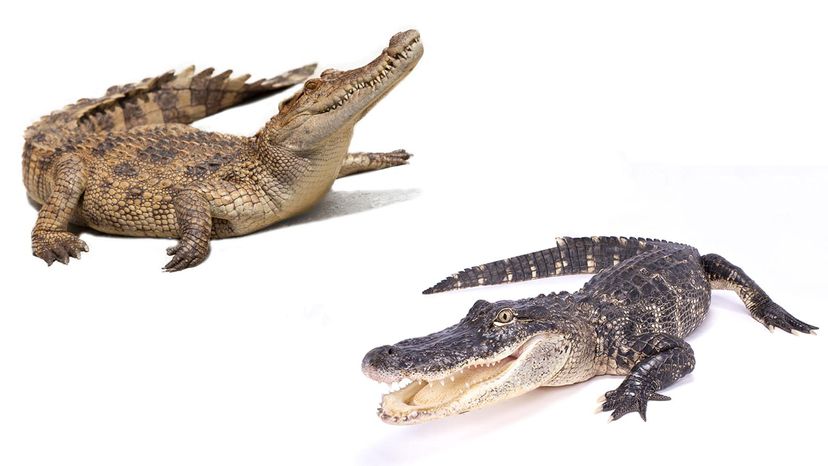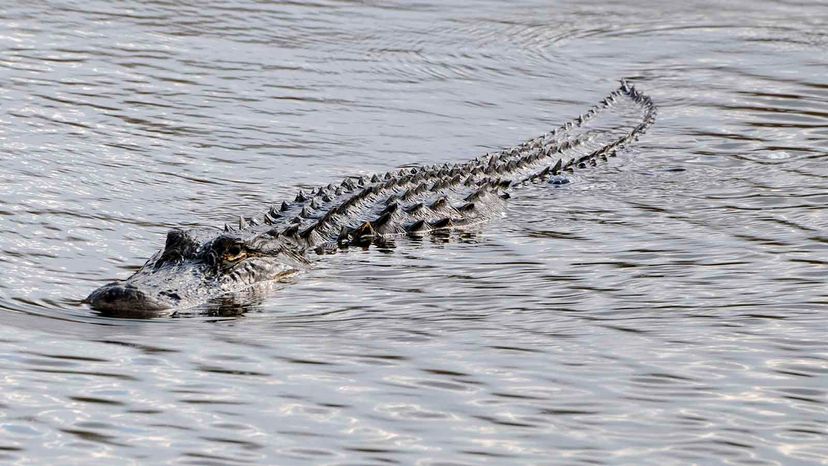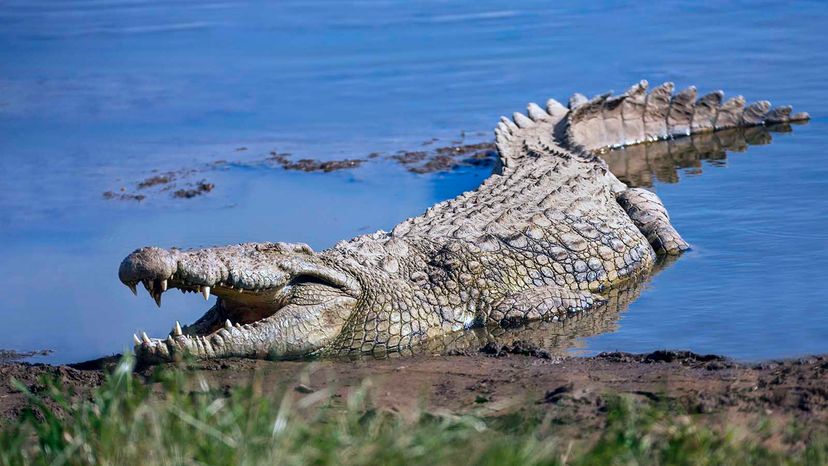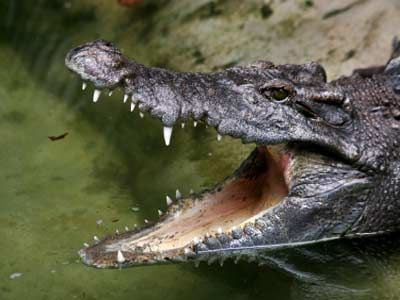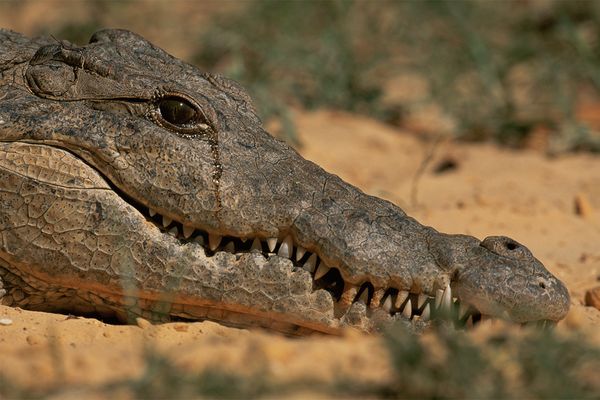Here are a few significant differences between these amphibious apex predators.
1. Snout Shape
One of the key contrasts between alligators and crocodiles is their snout shape. A crocodile's V-shaped snout and wider upper jaw allows it to hide its teeth and deliver a stronger bite, cracking through tough skin and hard-shelled turtles. (In fact, the saltwater crocodile has the second strongest animal bite in the world.)
Meanwhile, both the upper and lower jaw of the alligator's rounded snout match up to hide the animal's lower teeth. Gators' U-shaped snouts and crowded interlocking jaws make many of their lower teeth stick out of their mouths — except for their large fourth tooth, which fits into a special pocket of their upper jaw.
2. Size
Alligators and crocodiles are extremely large reptiles, but in terms of average size, alligators are typically smaller than crocodiles.
An adult male American alligator can grow to a maximum length of 14 feet (4.2 meters), while an adult crocodile can reach an astounding maximum length of 20 feet (6 meters). Even when we look at extremes, the largest crocodile in captivity was a full 4 feet (1.2 meters) longer than the largest alligator ever caught.
3. Habitat
Crocodiles tend to prefer brackish water (a mix of fresh and saltwater) near coastlines, while alligators live in primarily freshwater environments; even freshwater crocodiles can tolerate saltwater for a bit. This is one of the main reasons why you'll see zoo maintenance workers cleaning alligator pools in separate enclosures from their crocodilian counterparts.
Although both alligators and crocodiles can survive for short periods of time in either environment, most crocodiles live in brackish estuaries like the South Florida Everglades.
Crocodiles can leave these saltwater environments and travel into freshwater hunting grounds because they possess lingual salt glands. Lingual salt glands excrete excess salt to regulate the crocodile's body cellular composition. These salt glands also help crocodiles complete this process without losing a significant amount of water, reducing the risk of dehydration.
4. Feet
Alligators have webbed feet, whereas crocodiles have separated toes. You can also identify a crocodile by the uniquely jagged fringe at its feet and hind legs.
